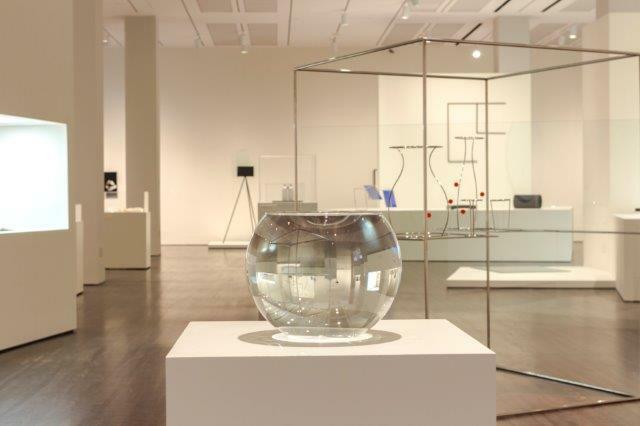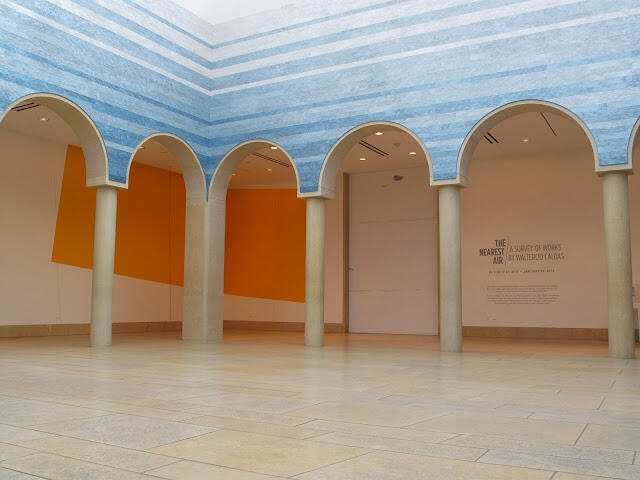Blanton Museum Presents First U.S. Career Survey of Brazilian Artist Waltercio Caldas
Brazilian artist Waltercio Caldas challenges not only the way we look at his objects in the moment but also our perspectives on art more generally.

For decades he has been a central figure in Brazilian art. While his influence extends across much of the art world, he has remained largely underrecognized in the United States. To make this exceptional artist more widely known to the U.S. audience, the Blanton Museum of Art at the University of Texas at Austin and the Fundação Iberê Camargo, a premier art organization in Porto Alegre, Brazil, have organized the exhibition The Nearest Air: A Survey of Works by Waltercio Caldas.
Featuring more than 75 works — including several that have never been publicly exhibited — “The Nearest Air: A Survey of Works by Waltercio Caldas” will explore highlights of the artist’s production from the 1960s through the present. It will investigate Caldas’ centrality within modern Brazilian art, his role on the international stage and his unique position on art and its ethos. Following its recent presentation at two Brazilian venues — the Fundação Iberê Camargo in Porto Alegre and the Pinacoteca do Estado de São Paulo — the expanded exhibition will have its North American premiere at the Blanton and will be accompanied by the first major publication of the artist’s work in the United States.
“For decades, Caldas has been a central figure in Brazilian art,” says Blanton Director Simone Wicha. “This exhibition brings his work to a broader audience and highlights one of the Blanton Museum of Art’s core commitments: to identify exceptional artists from Latin America and to highlight the importance of their work within a global context to students and the public.”
Caldas’ work defies typical interpretation and classification. Using materials that range from the refined to the commonplace, his sculpture, installations and drawings examine the physical qualities of objects and spaces, often challenging the assumptions viewers bring to the act of looking. He defines his practice as the act of sculpting the distance between objects, inverting the conventional definition of sculpture as a dense, self-contained volume. Above all, simplicity and formal precision define his art, qualities that speak to his aim to produce what he describes as “maximally present work through minimal action.”
His installation “The Nearest Air” (1991), in which suspended lengths of red and blue yarn radically transform empty space, epitomizes these concerns and exemplifies Caldas’ predilection for poetic and ambiguous titles. Another hallmark of his practice is the production of artist’s books, a body of work that illustrates Caldas’ playful use of the written word and his interest in art history, philosophy and systems of knowledge.
Elaborating on the work of numerous modernist predecessors, Caldas draws knowingly from a wide range of Brazilian and international references. “The Nearest Air: A Survey of Works by Waltercio Caldas” will bring to light an artist whose work broadens the scope of traditional art historical discourse, while actively challenging viewers to question their perceptions of space and notions of reality.
The exhibition catalog, “Waltercio Caldas,” will be the first illustrated English-language publication to fully explore Caldas’ four-decade artistic trajectory, his influences and his impact. The book, to be co-published by the Blanton Museum of Art and the University of Texas Press, features insightful essays by distinguished art critics Richard Shiff and Robert Storr, as well as by exhibition guest curator Gabriel Pérez-Barreiro.
About Waltercio Caldas
Waltercio Caldas was born in Rio de Janeiro in 1946. He has had solo exhibitions at the Museum of Modern Art in Rio; the Kanaal Foundation in Belgium; the Stedelijk Museum in Amsterdam; the Christopher Grimes Gallery in Santa Monica, Calif.; and other spaces. He showed at the Venice Biennale in 1997 and 2007, and he has also shown in several Mercosul and São Paulo Biennials. His work is included in the collections of the Museum of Modern Art, New York; the National Gallery of Art, Washington, D.C.; Museu de Arte Moderna, São Paulo; Colección Patricia Phelps de Cisneros, Venezuela/New York; the Bruce and Diane Halle Collection, Scottsdale; and the Blanton Museum of Art, University of Texas, Austin.








